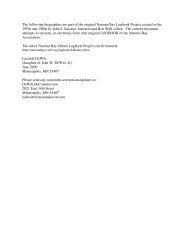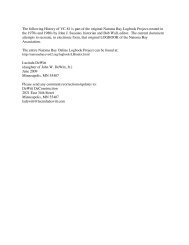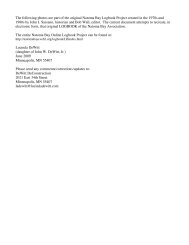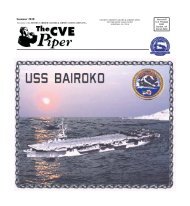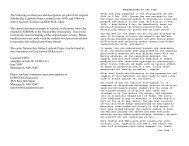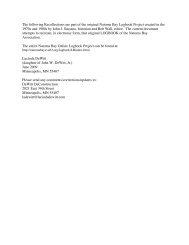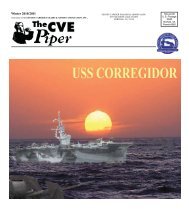You also want an ePaper? Increase the reach of your titles
YUMPU automatically turns print PDFs into web optimized ePapers that Google loves.
due east, a compromise course that opened the range but was<br />
close enough into the northeast wind to permit him to launch<br />
planes, all of which he ordered to take to the air and<br />
attack the enemy with whatever ammunition they had on board.<br />
He also called loudly for help in plain English. Rear<br />
Admiral Felix B. Stump's Taffy, of similar composition, was<br />
just over the horizon to the southwest. Stump responded<br />
promptly with aircraft, and also by reassurance and good<br />
advice over voice radio. Taffy 1, under the group commander,<br />
Rear Admiral Thomas L. Sprague, was 130 miles to the south,<br />
too far away to lend immediate help; besides, most of its<br />
planes were over the Mindanao Sea looking for the remnant of<br />
the Southern Forces. Six bombers and 20 fighters came over<br />
from the <strong>Leyte</strong> area to help. Halsey was nearly 400 miles to<br />
the north; McCain, nearly 400 miles to the northeast.<br />
As the volume and accuracy of the Japanese fire<br />
increased, and 14-, 16-, and 18-inch shell splashes began<br />
walking up on and straddling the ships, Sprague ordered his<br />
escorts to attack with torpedoes and then dived with his<br />
carriers into a providential rain squall. Thus concealed, he<br />
turned south and headed for <strong>Leyte</strong> <strong>Gulf</strong>, hoping to meet<br />
Seventh Fleet heavies coming to his rescue. When he came out<br />
again into the open, he was relieved to note that the enemy<br />
had not cut corners but was evidently intent on getting to<br />
windward to block the carriers from further air operations.<br />
Meanwhile, Sprague's three destroyers, with the sole<br />
purpose of diverting gunfire from the carriers, had<br />
sped toward the enemy in what they recognized as a<br />
suicide attack. Chasing salvos, making smoke, dodging<br />
into rain squalls, they closed on the oncoming Japanese<br />
and launched their spreads of torpedoes. To evade<br />
these, the flagship Yamato, together with another<br />
battleship, retired northward for 10 minutes, thereby<br />
carrying Admiral Kurita out of sight of the fleeing<br />
carriers, and thus effectively out of the battle. The<br />
heavy cruiser Kumano was put out of action by a single<br />
torpedo from the destroyer Johnston, and at this time<br />
or a little later the heavy cruisers Chokai and Chikuma<br />
were probably also torpedoed. The heavy cruiser Suzuya,<br />
already slowed by air bombing, came alongside the<br />
30 <strong>Leyte</strong> <strong>Gulf</strong>



